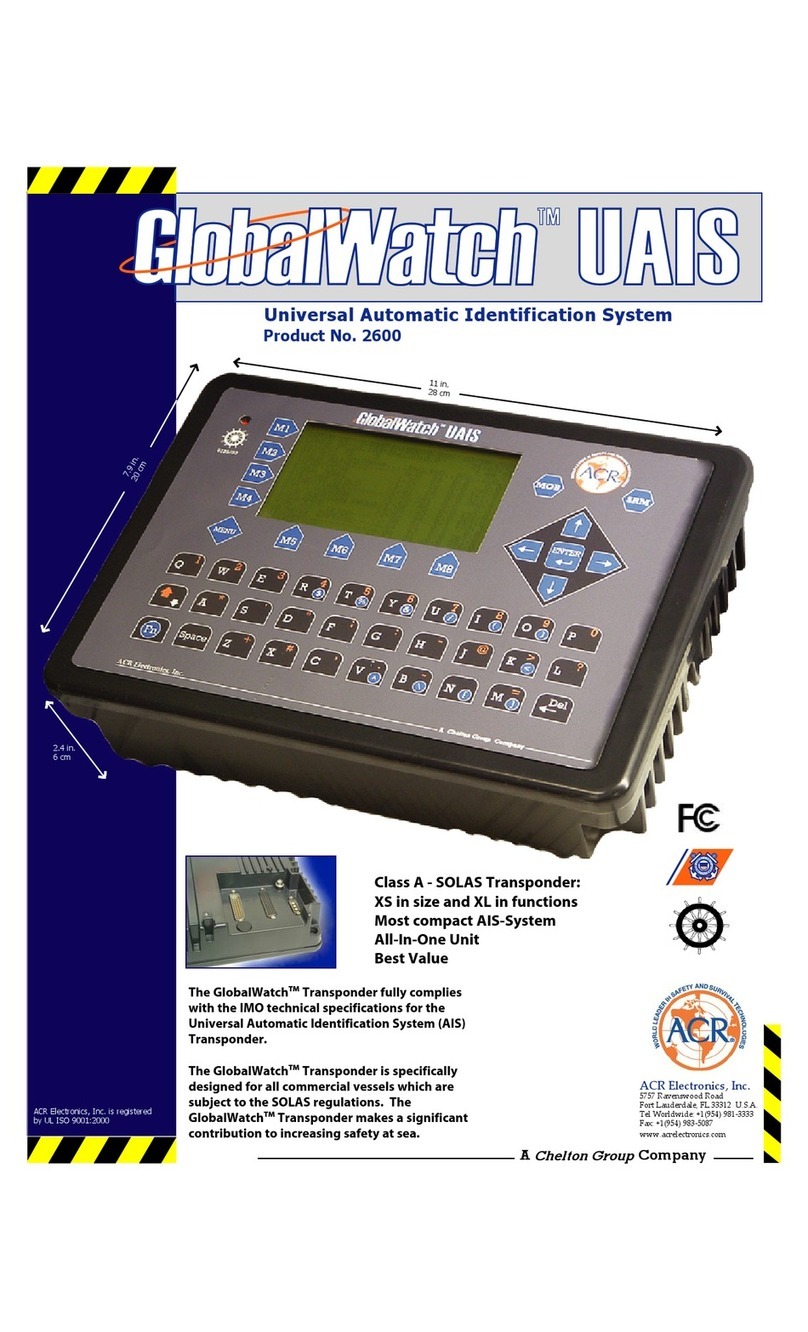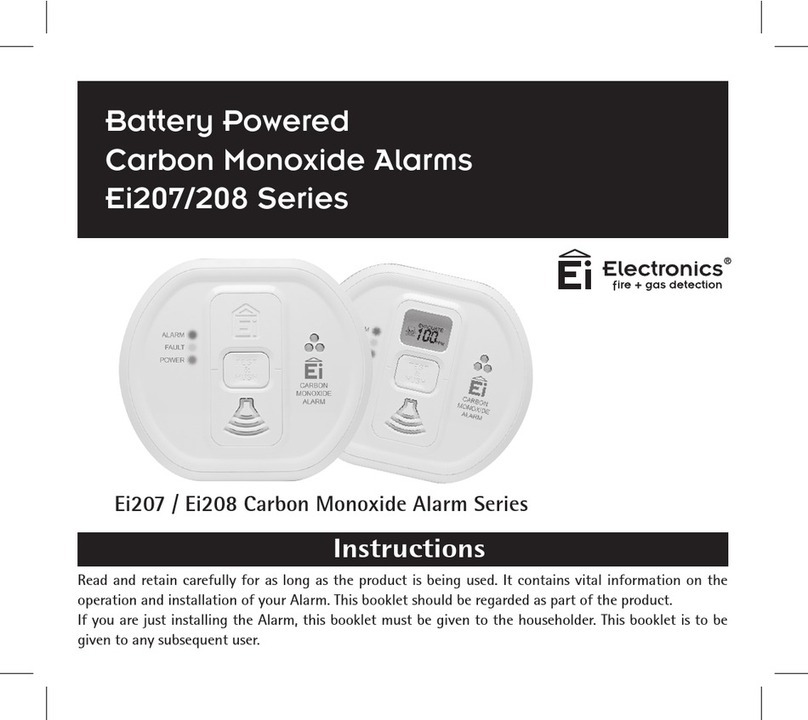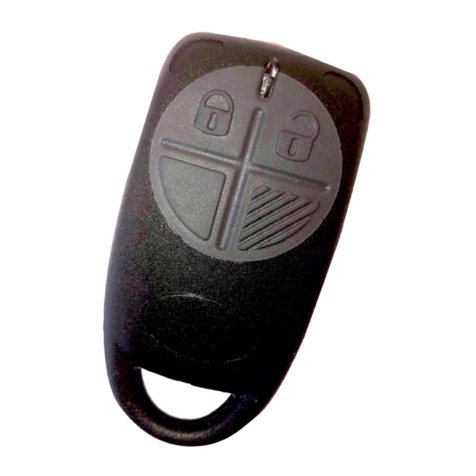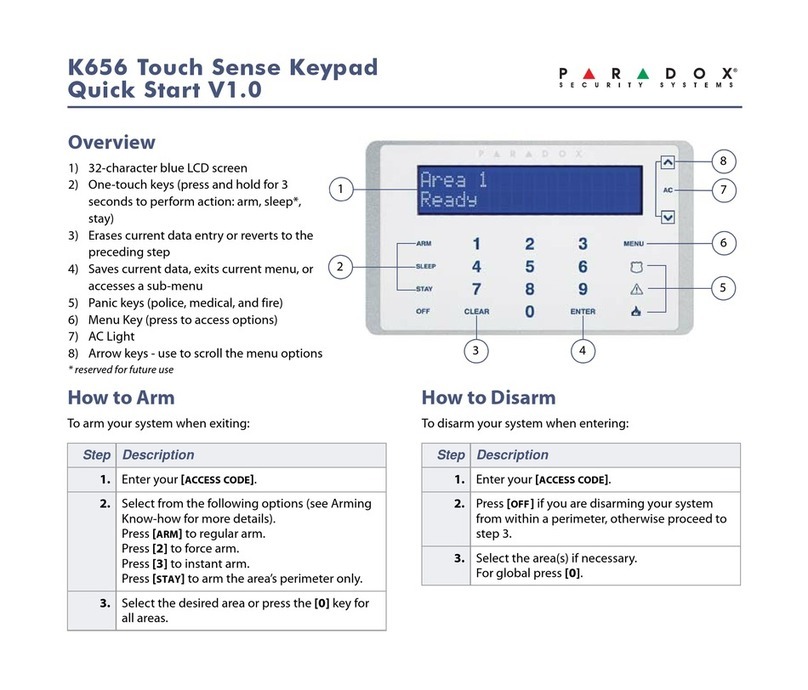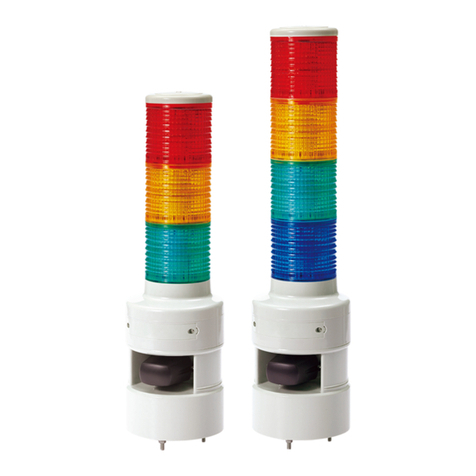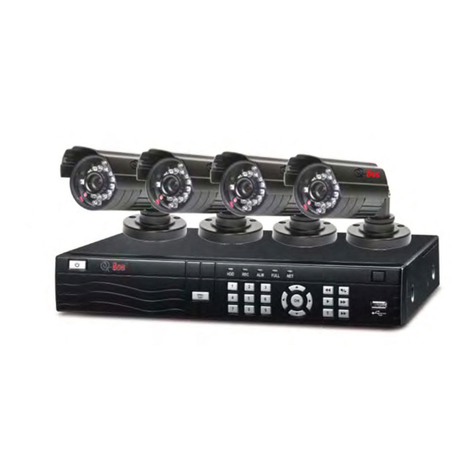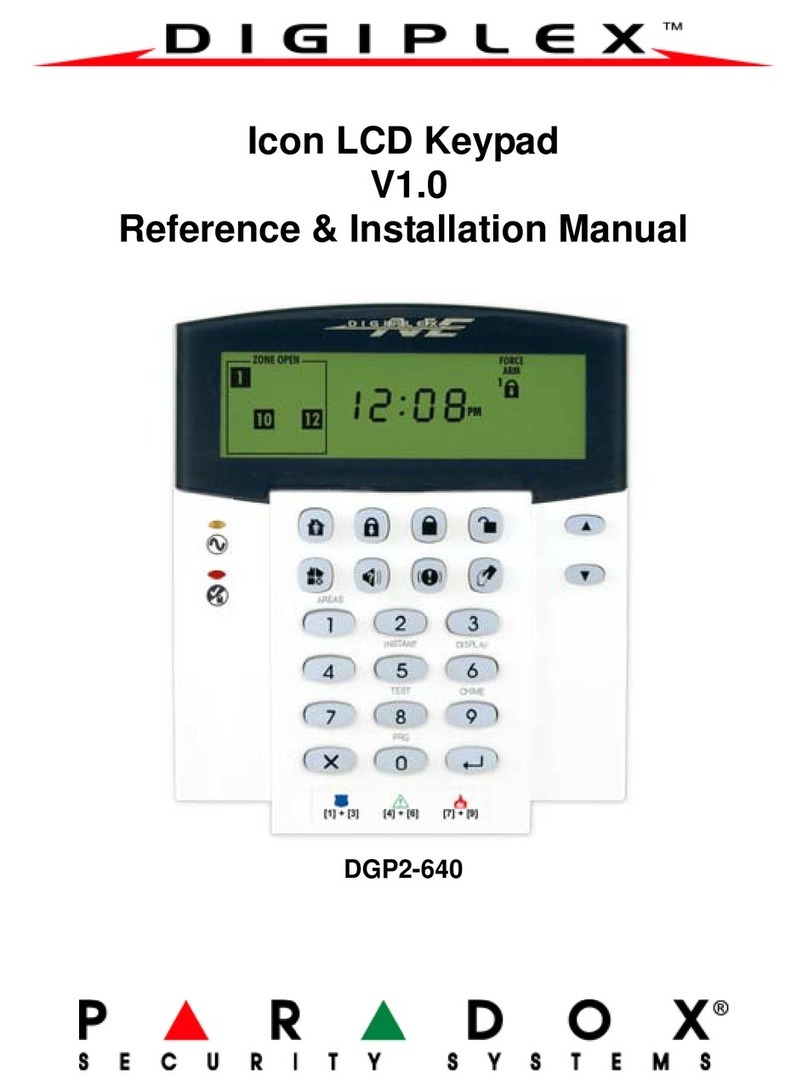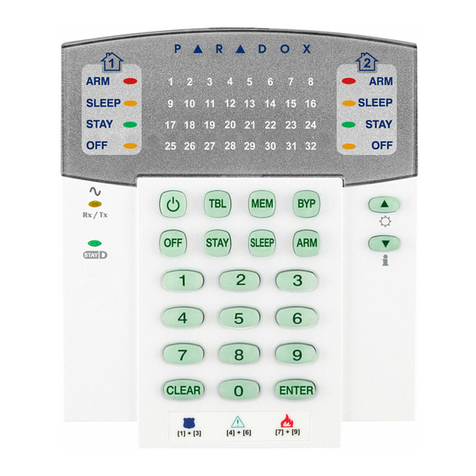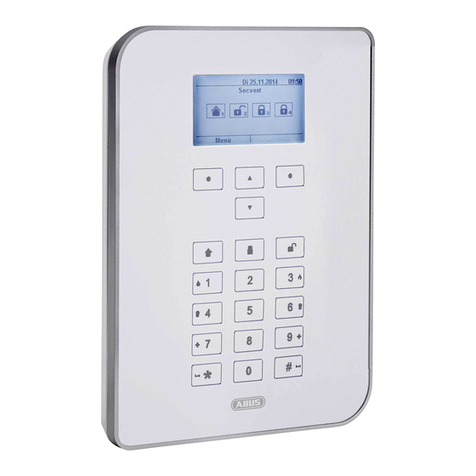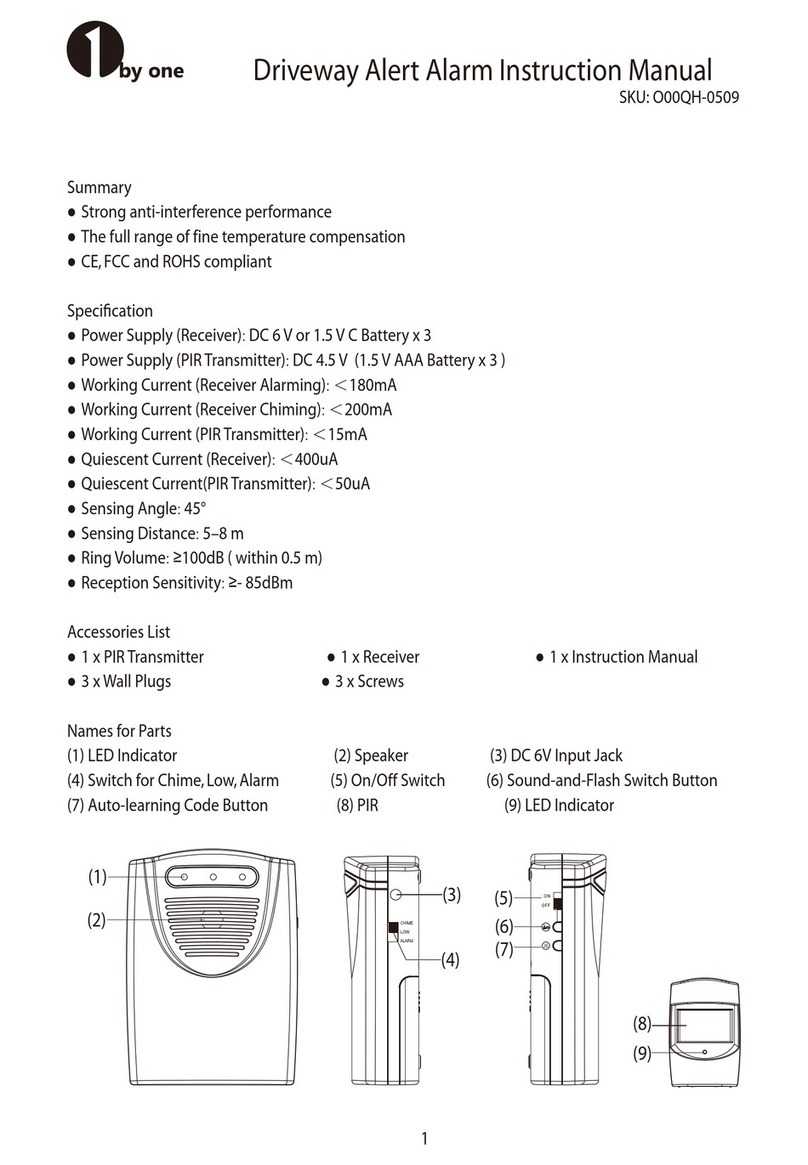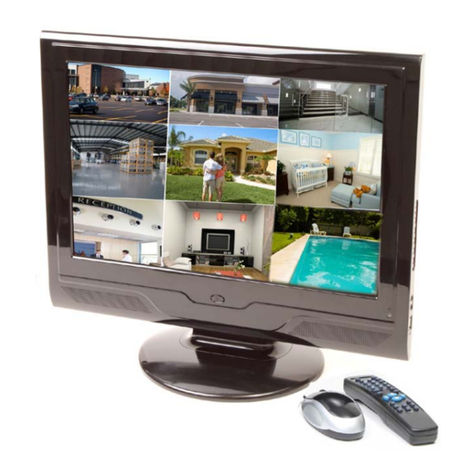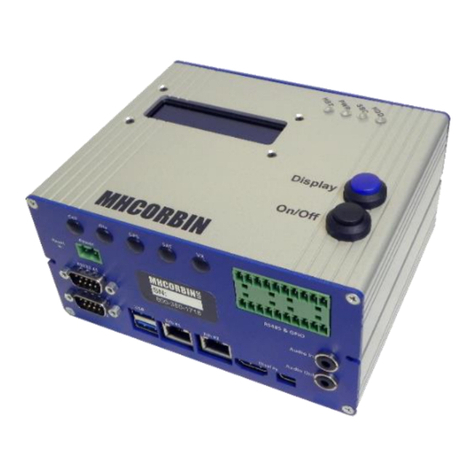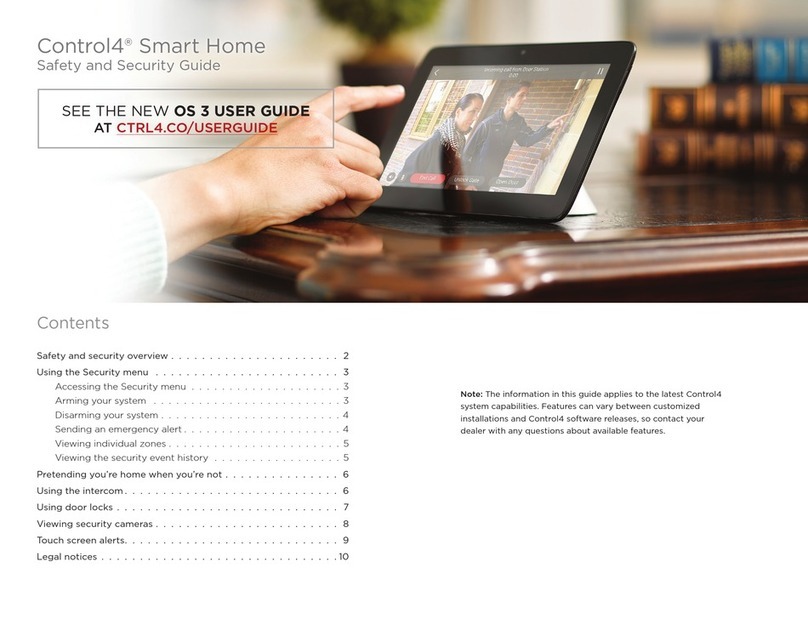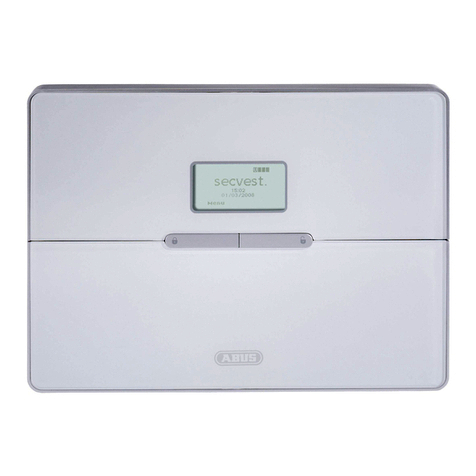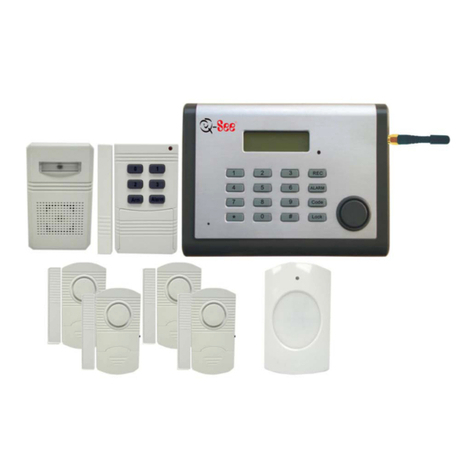FORENSICS DETECTORS FD-SZ001 User manual

LOW LEVEL & FAST CARBON MONOXIDE ALARM, MODEL: FD-SZ001
FORENSICS DETECTORSTM
!
!
FAST & LOW LEVEL
CARBON MONOXIDE ALARM
Model: FD-SZ001
User Manual Version 1.0
INTRODUCTION
The FORENSICS LOW LEVEL & FAST CO ALARM is designed to provide
added protection for older adults, elderly, pregnant women, young
children, and persons with medical conditions who may be more
vulnerable to the adverse health effects of exposure to low CO levels. This
CO detector triggers an audible alarm when CO detected > 25ppm. Such
low-level CO alarming is closer to Agency (see below table) CO gas
exposure limits that those within UL2034 (70ppm from 60-240minutes).
Agency
CO Gas Exposure Limits
WHO
9ppm average over 8hours
EPA
9ppm average over 8 hours
ASHRAE
9ppm average over 8 hours
NIOSH
35ppm average over 10 hours
200ppm ceiling value
OSHA
50ppm average over 8 hours
ACGIH
25ppm average over 8 hours
** WARNING **
• DOES NOT COMPLY WITH UL2034.
• ENSURE YOU HAVE A UL2034 CO DETECTOR.
• CO IS A TOXIC GAS and CAN KILL YOU.
• DO NOT BLOCK THE GRILLED VENTS / SLOTS.
• THE UNIT CANNOT sustain EXCESSIVE SCHOCK.
• THIS IS NOT A SMOKE OR FIRE DETECTOR.
• DO NOT PAINT ON OR NEAR THE MONITOR.
• DO NOT SPRAY AIR REFRESHENER, CLEANING SUPPLIES, OR
INSECT KILLER NEAR THE UNIT.
• UNIT DESIGNED ONLY FOR INDOOR USE.
• DO NOT TEST THE UNIT WITH EXHAUST GAS.
• DISPOSE UNIT 7 YEARS after Production Date.
• DEPRESS THE TEST BUTTON WEEKLY.
• TAKE EACH ALARM SERIOUSLY!
1. FEATURES
1. Low-level display, display >10ppm.
2. Fast alarming when CO > 25ppm.
3. Voice Alarm.
4. 7-year sensor life.
5. 7-year battery life.
6. Low battery warning.
7. Humidity and Temperature Display.
8. 1-year limited warranty.
2. SPECIFICATIONS
Power Source: 4 x AA 1.5V lithium battery (7 year life)
Sensor Type: Electrochemical, 7 year life
Target Gas: Carbon Monoxide
Alarm activation: 25 ppm
CO Display Range: 0-9ppm …displays “0”
10-999ppm …displays level
Accuracy: +/- 30% of reading
Operation Temp: 20 to 122F
Ambient Humidity: 10% to 90%
Buzzer Level: 85dB @ 3m
Product Weight: 200g
Product Life: 7 years of Label Date
Product Size: 140x66x35mm
3. CARBON MONOXIDE GAS
Carbon monoxide (CO) is a colorless, odorless, and tasteless poison gas
that can be fatal when inhaled. CO inhibits the blood's capacity to carry
oxygen. Inside your home, appliances used for heating and cooking are the
most likely sources of CO. CO can be produced when burning any fossil
fuel: gasoline, propane, natural gas, oil and wood. CO can be produced by
any fuel-burning appliance that is malfunctioning, improperly installed, or
not ventilated correctly. Possible CO sources include furnaces, gas
ranges/stoves, gas clothes dryers, water heaters, portable fuel burning
space heaters, fireplaces, wood-burning stoves and swimming pool
heaters. Blocked chimneys or flues, back drafting and changes in air
pressure, corroded or disconnected vent pipes, or a loose or cracked
furnace exchanger can also release CO into your home or space. Vehicles
and other combustion engines running in an attached garage or using a
charcoal/ gas grill or hibachi in an enclosed area are sources of CO.
4. SYMPTOMS OF CO POISONING
Initial carbon monoxide poisoning symptoms include dizziness, severe
headaches, nausea, vomiting and disorientation. Everyone is susceptible
but experts agree that unborn babies, pregnant women, senior citizens
and people with heart or respiratory problems are especially vulnerable. If
symptoms of carbon monoxide poisoning are experienced seek medical
attention immediately. CO poisoning can be determined by a
carboxyhemoglobin blood test. The following symptoms are related to
CARBON MONOXIDE POISONING and should be discussed with ALL
members of the household:
• Mild Exposure: Slight headache, nausea, vomiting, fatigue (often
described as “Flu-like” symptoms).
• Medium Exposure: Severe throbbing headache, drowsiness,
confusion, fast heart rate.
• Extreme Exposure: Unconsciousness, convulsions, cardio
respiratory failure and death.
The levels of exposure relate to healthy adults. Levels differ for those at
higher risk. Exposure to high levels of carbon monoxide can be fatal or
cause permanent damage and disabilities. Many cases of reported carbon
monoxide poisoning indicate that while victims are aware they are not
feeling well, they become so disoriented they are unable to save
themselves by either exiting the building/home, or calling for assistance.
Also, young children and household pets may be the most sensitive.
Familiarization with the effects of each level is important. Please be
attentive and it is your responsibility.
5. RECOMMENDED LOCATIONS
CO alarms should be mounted in or near bedrooms and living areas. It is
recommended that you install the CO alarm (at minimum) on each level of
your home. When choosing your installation locations, make sure you can
hear the alarm from all sleeping areas. If you install only one CO alarm in
your home, install it near bedrooms, not in the basement or furnace room.
When wall mounting, keep it out of the reach of children, pets or
accidental bumps. Under no circumstances should children be allowed to
handle the CO alarm. Placing the alarm at eye level is recommended as
it allows for optimum daily monitoring of the digital display.
6. LOCATIONS TO AVOID
• Avoid installation in areas where the temperature is colder than 40°F
(4.4°C) or hotter than 100°F (37.8°C) such as crawl spaces, attics,
porches and garages.
• Do not install within 5 ft. of heating or cooking appliances.
• Do not install near vents, flues, chimneys or any forced/unforced air
ventilation openings.
• Do not install near ceiling fans, doors, windows or areas directly
exposed external air, water or rain reaches the alarm.
• Do not install in dead air spaces, such as peaks of vaulted ceilings or
gabled roofs.
• Do not install on a switched or dimmer-controlled outlet.
• Do not install this unit near deep-cell large batteries. Large batteries
have hydrogen gas emissions that can cause the alarm to perform at
less than optimum performance and false alarm.
• Do not obstruct the vents located on the alarm. Do not place the alarm
where drapes, furniture or other objects block the flow of air.
7. INSTALLATION
The detector comes with batteries included in the battery
compartment. Open the compartment and remove the plastic that
protects the battery connecting. The Detector then turns ON.
Establish a mount location considering the prior locations to avoid.
Having established the mounting location, ensure that there is no
electrical wiring or pipe work in the area adjacent to the mounting
surface. The detector comes with (a) mount plate (b) 2 x screw and
(c) 2 x plastic drywall expansion anchors.
• Remove the mount plate from the detector by sliding it off.
Mark the two mount hole locations on a wall using the
backplate holes as a guide.
• Drill holes in the positions marked using a 5mm drill bit.
• Insert the plastic drywall expansion anchors.
• Install the mount plate, align the holes and screw the screws into
the anchors.
• Slide the detector onto the mount plate.
• The detector is ready for continuous operation.

LOW LEVEL & FAST CARBON MONOXIDE ALARM, MODEL: FD-SZ001
FORENSICS DETECTORSTM
!
!
8. OPERATION
8.1 Installation of Batteries
4 x AA1.5V batteries power this alarm. Open the battery compartment on
the rear of the detector and you will see the batteries already installed.
Remove the plastic to allow battery connection. Once immediately ON, the
green LED will Flash Continuously. When it stops flashing the unit is in
Normal Operating Mode.
8.2 NORMAL Operation
When no CO is present, the green “NORMAL” LED flashes once EVERY
50 SECONDS, LCD displays “0 PPM” is shown to indicate normal
operation. The unit will display the temperature and humidity values. The
battery indicator will also be displayed.
8.3 TESTING your CO alarm
Press the TEST button once (right button). The backlight will turn ON.
Red LED Alarm will turn ON. You will hear the voice “Emergency Carbon
Monoxide Alarming” – 4 beeps – then voice “Back to Normal”.
TEST YOUR DETECTOR WEEKLY.
8.4 CO ALARM SEQUENCES
When the unit detects levels of CO above 25ppm it will emit an alarm
signal along with flashing of red LED (see below). When the CO
concentration drops below 25ppm the alarm will stop.
CO Level
Alarm
0 to 24ppm
No Alarm
> 25ppm
After 60 seconds at over
25ppm, alarming will be with 4
beeps every 6 seconds with 4
flashes of the RED LED. Voice
says “Emergency Carbon
Monoxide Alarming”
8.5 LOW BATTERY Signal
The unit has a battery indicator. When at the lowest point, you will hear a
single “beep” every 45 seconds and the POWER LED will blink. This is the
low battery alarm and indicates to immediately change the batteries.
Always replace with 4 x AA Lithium batteries.
8.6 FAULT Signal
The unit may experience failure. If it does, it will indicate this by the FAULT
LED. Also display will show Err1. Please replace the unit.
8.7 End of Life
If the PRODUCTION DATE plus 7 years has been exceeded, please replace the
detector. As the detector ages, it reduces in sensitivity.
9. ALARM ACTION PLAN
If a CO alarm occurs, take the following action:
• Immediately move to fresh air outdoor.
• Where possible, SAFELY turn off fuel burning appliance. Evacuate.
• Do not re-enter the premises nor move away from the open door or
window until emergency services responders have arrived, the
premises have been aired out, and your alarm remains in its normal
condition.
• Seek medical help immediately for anyone suffering from the
symptoms of headache, drowsiness, nausea, etc.
• Do not use the appliances again until they have been checked by a
qualified technician and the CO source has been rectified.
10. MAINTENANCE OF UNIT
• Test the alarm weekly by pressing the TEST button.
• Check grilled vent slots to ensure no blockage.
• Clean your CO alarm regularly to prevent dust build up.
• This can be done using a vacuum cleaner with the brush attachment
once per month. Clean gently around the front grilled vent slots.
• Never use cleaning solutions on your alarm.
• Do not paint the alarm.
• Do not tamper with any of component as this may lead to a product
fault and cause Risk of death.
• Do not place the detector in the bathroom, it will trigger a false alarm
when high humidity occurs due to operation of the shower.
• DO NOT USE EXHAUST GAS FROM A VEHICLE TO TEST THE UNIT, IT
WILL DAMAGE THE SENSOR AS EXHAUST GAS HAS HIGH
CONCENTRATIONS OF ACIDIC GAS.
WARRANTY DISCLAIMERS:
This product is covered by a one year limited warranty.
This warranty does not cover damage resulting from accident, misuse,
disassembly, abuse or lack of reasonable care of the product, or
applications not in accordance with the user manual. It does not cover
events and conditions outside of our control, such as Acts of God (fire,
severe weather etc..). It does not apply to retail stores, service centers or
any distributors or agents. We will not recognize any changes to this
warranty by third parties. We shall not be liable for any incidental or
consequential damages caused by the breach of any express or implied
warranty. Except to the extent prohibited by applicable law, any implied
warranty of merchantability or fitness for a particular purpose is limited in
duration for 1 year.
THIS PRODUCT CANNOT BE REPAIRED IF THE UNIT IS TAMPERED
WITH IT WILL INVALIDATE THE GUARANTEE. IF THE UNIT IS FAULTY
PLEASE RETURN IT TO YOUR ORIGINAL SUPPLIER WITH YOUR
PROOF OF PURCHASE.
!
Support & Questions
WEB: www.forensicsdetectors.com
Email: [email protected]
!
!
Product Designed in California, USA
Product Made in China
** WARNING **
• DOES NOT COMPLY WITH UL2034.
• ENSURE YOU HAVE A UL2034 CO DETECTOR.
• CO IS A TOXIC GAS and CAN KILL YOU.
• DO NOT BLOCK THE GRILLED VENTS / SLOTS.
• THE UNIT CANNOT sustain EXCESSIVE SCHOCK.
• THIS IS NOT A SMOKE OR FIRE DETECTOR.
• DO NOT PAINT ON OR NEAR THE MONITOR.
• DO NOT SPRAY AIR REFRESHENER, CLEANING SUPPLIES, OR
INSECT KILLER NEAR THE UNIT.
• UNIT DESIGNED ONLY FOR INDOOR USE.
• DO NOT TEST THE UNIT WITH EXHAUST GAS.
• DISPOSE UNIT 7 YEARS after Production Date.
• DEPRESS THE TEST BUTTON WEEKLY.
• TAKE EACH ALARM SERIOUSLY!
!
